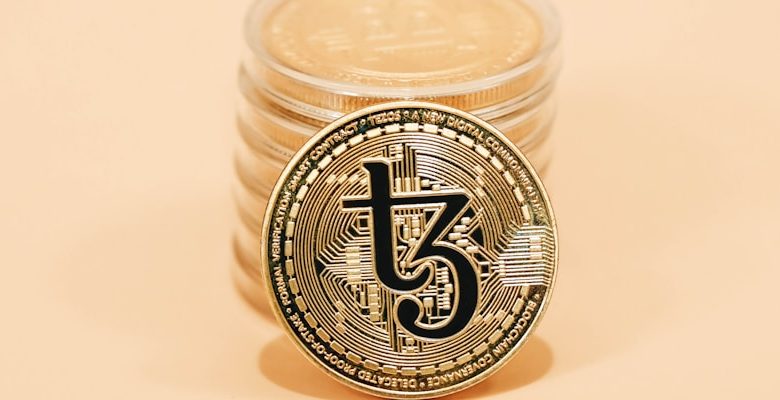What is a Blockchain Fork? Hard Fork vs. Soft Fork Explained

- Understanding the Basics of Blockchain Forks
- Exploring the Differences Between Hard Forks and Soft Forks
- The Impact of Forks on the Blockchain Ecosystem
- Navigating the Forks: A Comprehensive Guide
- Hard Fork vs. Soft Fork: Which is Better for Blockchain?
- Key Considerations When Dealing with Blockchain Forks
Understanding the Basics of Blockchain Forks
Understanding the basics of blockchain forks is crucial for anyone involved in the cryptocurrency space. A fork refers to a split in the blockchain network that creates two separate paths. There are two main types of forks: hard forks and soft forks.
Hard forks occur when a blockchain splits into two separate chains due to a change in the protocol that is not backward compatible. This means that nodes operating under the old protocol will not be able to validate blocks created under the new protocol. As a result, a hard fork can lead to a permanent divergence in the blockchain.
Soft forks, on the other hand, are backward compatible upgrades to the blockchain protocol. This means that nodes running the old protocol can still validate blocks created under the new protocol. Soft forks typically require a majority of the network’s hash power to upgrade to the new protocol, ensuring a smooth transition.
Both hard forks and soft forks can have significant implications for the blockchain network and its users. It is essential to understand the differences between the two types of forks and the potential risks and benefits associated with each. By staying informed and being prepared for potential forks, cryptocurrency investors can navigate these changes with confidence.
Exploring the Differences Between Hard Forks and Soft Forks
A blockchain fork occurs when there is a change in the protocol of a blockchain, leading to a divergence in the network. There are two main types of forks: hard forks and soft forks. These forks have distinct differences in how they are implemented and the impact they have on the blockchain.
Hard forks result in a permanent split from the original blockchain, creating a new network that is incompatible with the old one. This means that nodes running the old software will not be able to communicate with nodes running the new software. Hard forks typically require all nodes to upgrade to the new protocol to continue participating in the network.
On the other hand, soft forks are backward-compatible upgrades to the blockchain protocol. This means that nodes running the old software can still interact with nodes running the new software. Soft forks are implemented by tightening the rules of the protocol, making previously valid blocks invalid. Nodes that have not upgraded will still accept the new blocks as valid.
In summary, hard forks result in a permanent divergence in the blockchain, creating two separate networks. Soft forks, on the other hand, are backward-compatible upgrades that do not create a permanent split. Understanding the differences between hard forks and soft forks is crucial for blockchain developers and users to navigate changes in the network effectively.
The Impact of Forks on the Blockchain Ecosystem
One of the most significant impacts of forks on the blockchain ecosystem is the potential for creating two separate paths in the network. When a fork occurs, it can lead to a split in the community as users have to choose which version of the blockchain to support. This can result in disagreements and conflicts within the community, affecting the overall stability and consensus of the network.
Additionally, forks can also impact the value of cryptocurrencies. Depending on the type of fork and the support it receives from the community, the price of the cryptocurrency can be affected. In some cases, a fork can lead to a decrease in value as uncertainty and confusion arise. On the other hand, a successful fork that improves the technology or resolves issues can lead to an increase in value as confidence in the cryptocurrency grows.
Furthermore, forks can also have implications for developers and miners. Developers may have to update their software to support the new version of the blockchain, leading to additional work and potential costs. Miners may also have to choose which version of the blockchain to mine, impacting their profitability and the overall security of the network.
Overall, forks play a crucial role in shaping the blockchain ecosystem. They can lead to changes in community dynamics, price fluctuations, and additional work for developers and miners. Understanding the impact of forks is essential for anyone involved in the blockchain space to navigate potential challenges and opportunities that may arise.
Navigating the Forks: A Comprehensive Guide
One of the most crucial aspects of understanding blockchain technology is navigating the forks that can occur within a blockchain network. A fork is essentially a split in the blockchain, resulting in two separate paths moving forward. There are two main types of forks: hard forks and soft forks.
A hard fork is a permanent divergence from the previous version of the blockchain, leading to two separate blockchains. This type of fork requires all participants to upgrade to the new protocol. Hard forks are often used to implement significant changes to the blockchain that are not compatible with the existing network.
On the other hand, a soft fork is a temporary split in the blockchain that is backward-compatible with the previous version. In a soft fork, only a majority of the network’s hash power is required to enforce the new rules. This makes soft forks less disruptive than hard forks, as non-upgraded nodes can still interact with the network.
When navigating forks in a blockchain network, it is essential to understand the implications of each type of fork. Hard forks can lead to a permanent split in the network, resulting in two separate blockchains with different rules and protocols. Soft forks, on the other hand, are temporary and do not require all participants to upgrade to the new protocol.
In conclusion, understanding the differences between hard forks and soft forks is crucial for anyone involved in blockchain technology. By navigating the forks effectively, participants can make informed decisions about how to proceed when changes occur within a blockchain network.
Hard Fork vs. Soft Fork: Which is Better for Blockchain?
When it comes to blockchain forks, there are two main types to consider: hard forks and soft forks. Each type has its own benefits and drawbacks, so it’s important to understand the differences between them before deciding which is better for a particular blockchain.
A hard fork is a permanent split from the original blockchain, resulting in two separate chains. This type of fork requires all nodes to upgrade to the new protocol, making it a more drastic and divisive change. While hard forks can introduce new features and improvements to a blockchain, they also have the potential to create conflicts within the community.
On the other hand, a soft fork is a backward-compatible upgrade that does not require all nodes to update their software. This type of fork is less disruptive than a hard fork, as it only enforces new rules on the network without creating a separate chain. Soft forks are generally considered safer and less controversial than hard forks, but they may have limitations in terms of the changes they can introduce to a blockchain.
In terms of which is better for a blockchain, the answer depends on the specific goals and needs of the network. Hard forks can be more effective for implementing major changes and upgrades, but they come with a higher risk of causing disruptions and disagreements among users. Soft forks, on the other hand, are less disruptive and more flexible, but they may not be able to address certain issues or implement as significant updates as hard forks.
Ultimately, the decision between a hard fork and a soft fork should be based on careful consideration of the potential impacts and implications for the blockchain in question. It’s important for developers and stakeholders to weigh the pros and cons of each type of fork before making a decision that will affect the future of the network.
Key Considerations When Dealing with Blockchain Forks
When dealing with blockchain forks, there are several key considerations to keep in mind to navigate the process effectively. Whether it’s a hard fork or a soft fork, understanding the implications and potential outcomes is crucial.
One important consideration is to stay informed about upcoming forks in the blockchain network. By staying up to date with news and announcements from developers, you can be better prepared for any changes that may occur. Additionally, it’s essential to assess the reasons behind the fork and determine how it may impact your current operations.
Another crucial aspect to consider is the potential for network disruptions during a fork. Depending on the type of fork, there may be temporary disruptions to transactions or other network activities. It’s important to have contingency plans in place to mitigate any potential issues that may arise.
Furthermore, it’s important to consider the community response to a fork. Different stakeholders may have varying opinions on the proposed changes, which could lead to debates or conflicts within the community. Understanding these dynamics can help you navigate the situation more effectively.
Overall, when dealing with blockchain forks, it’s essential to stay informed, assess potential disruptions, and consider the community response. By keeping these key considerations in mind, you can better navigate the complexities of blockchain forks and make informed decisions for your operations.



